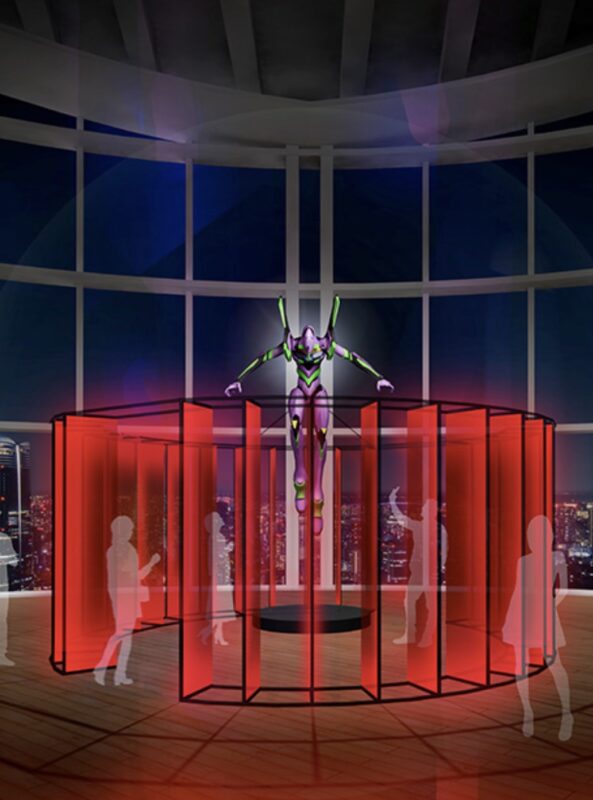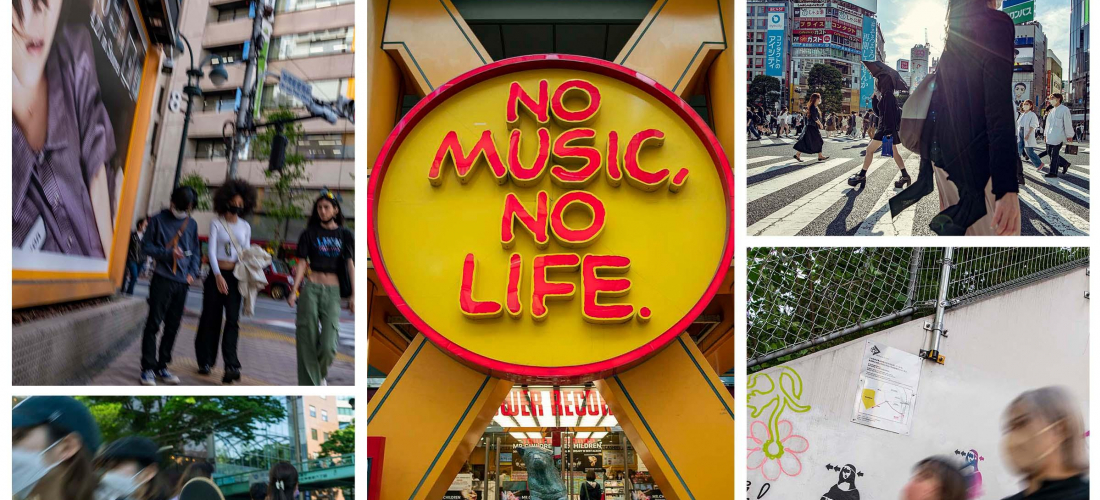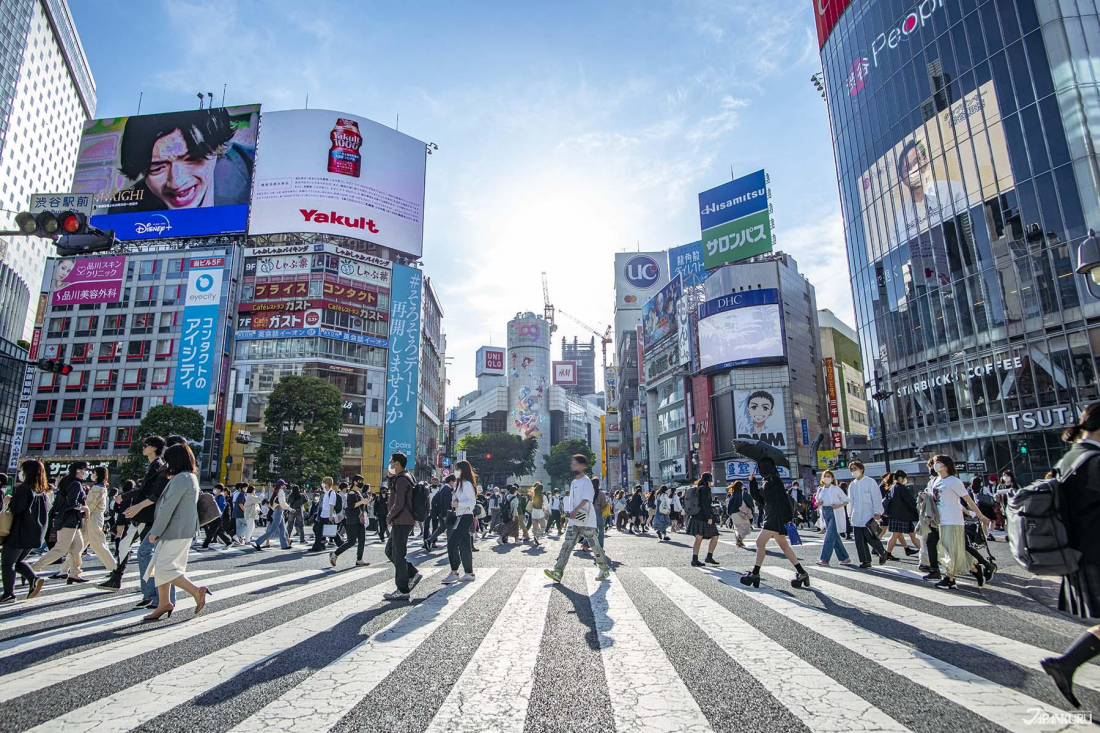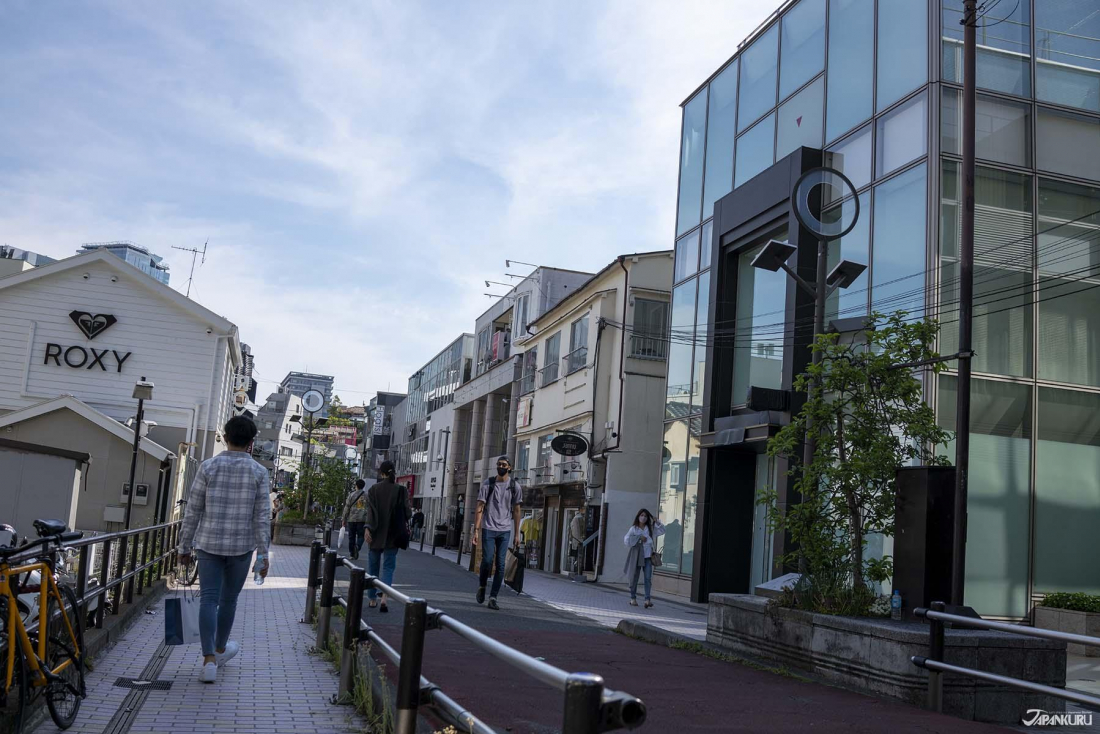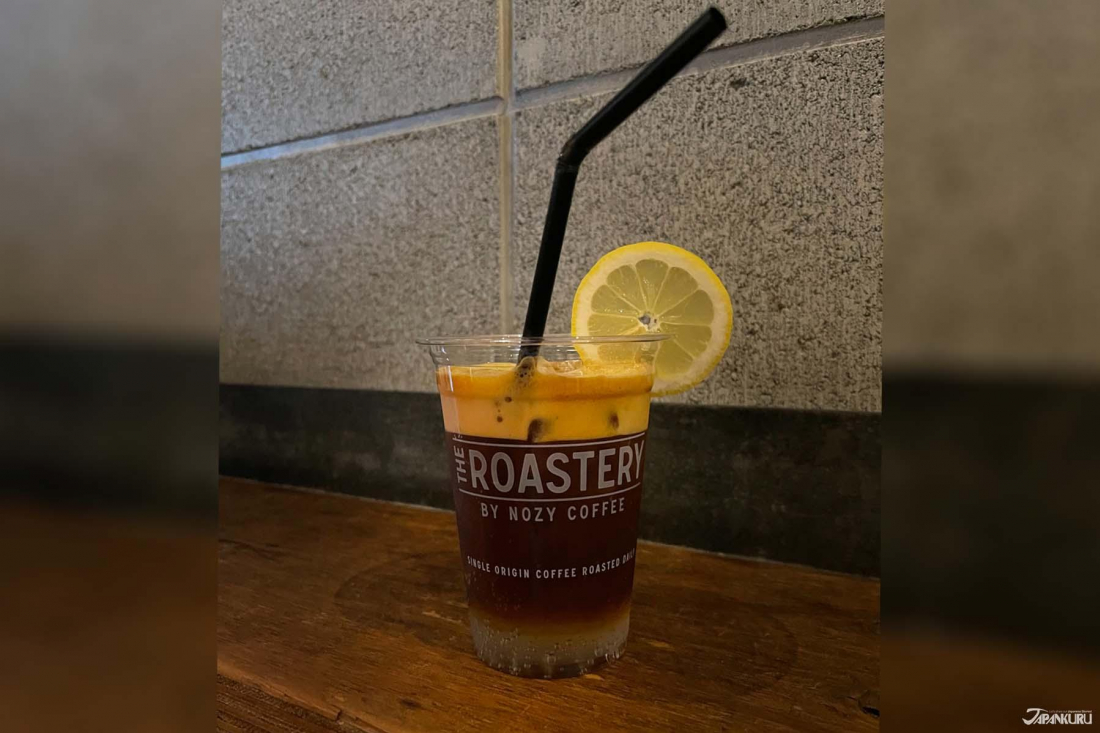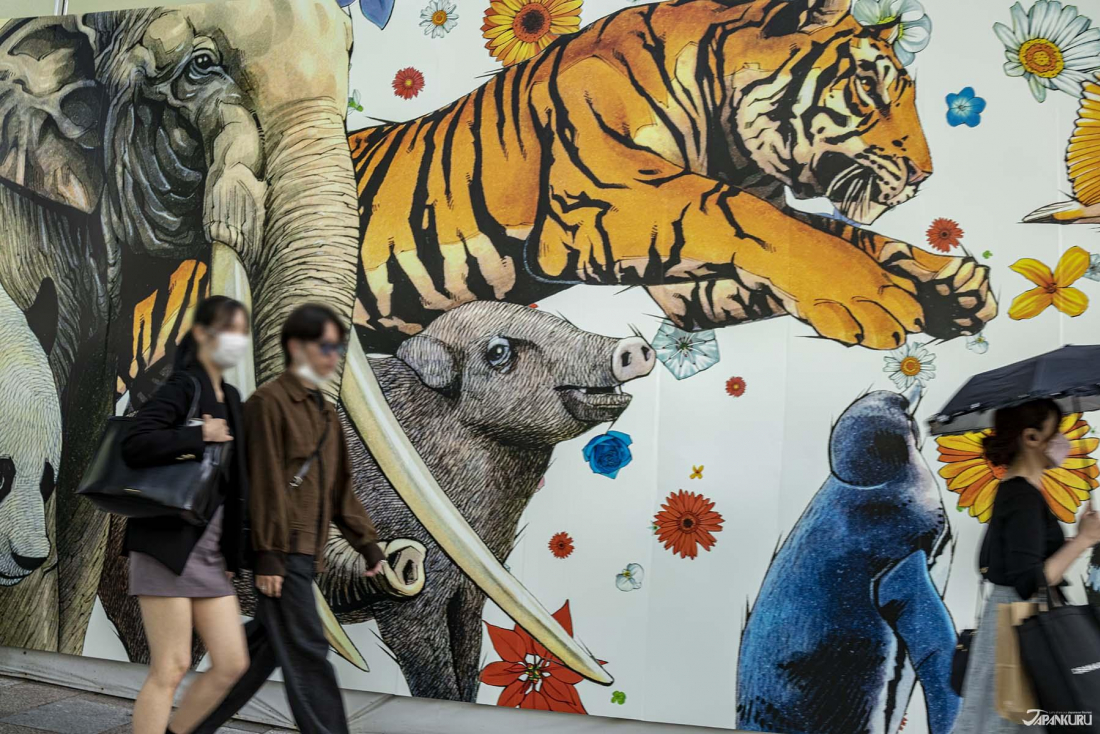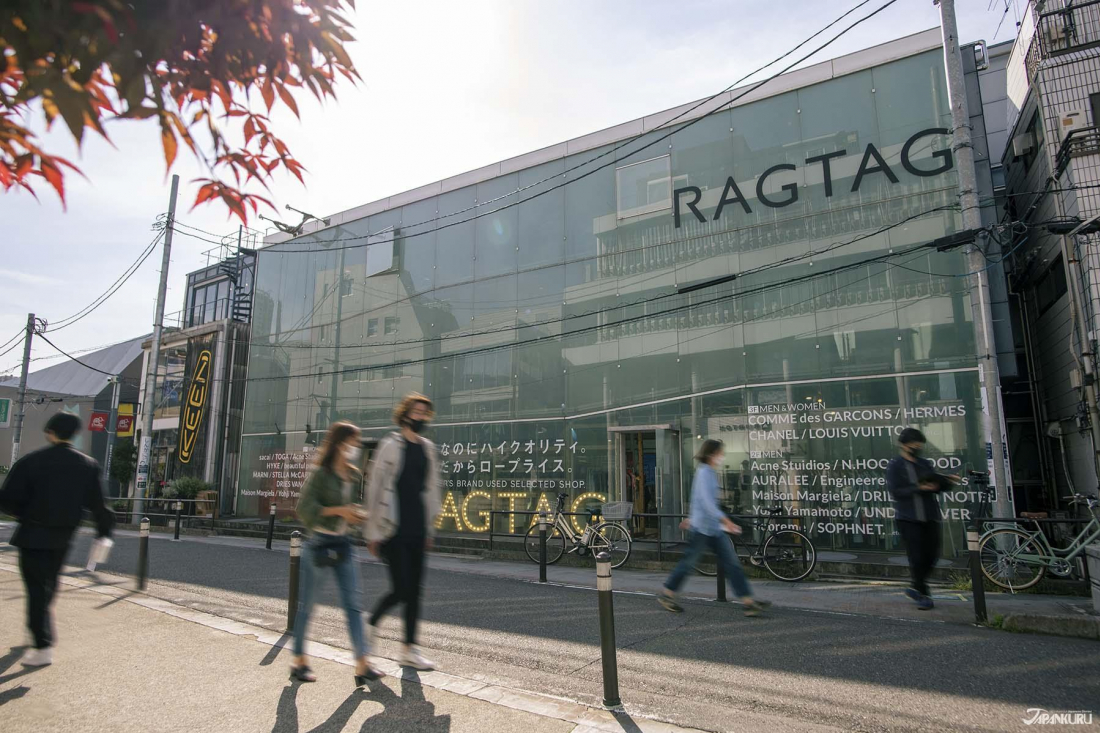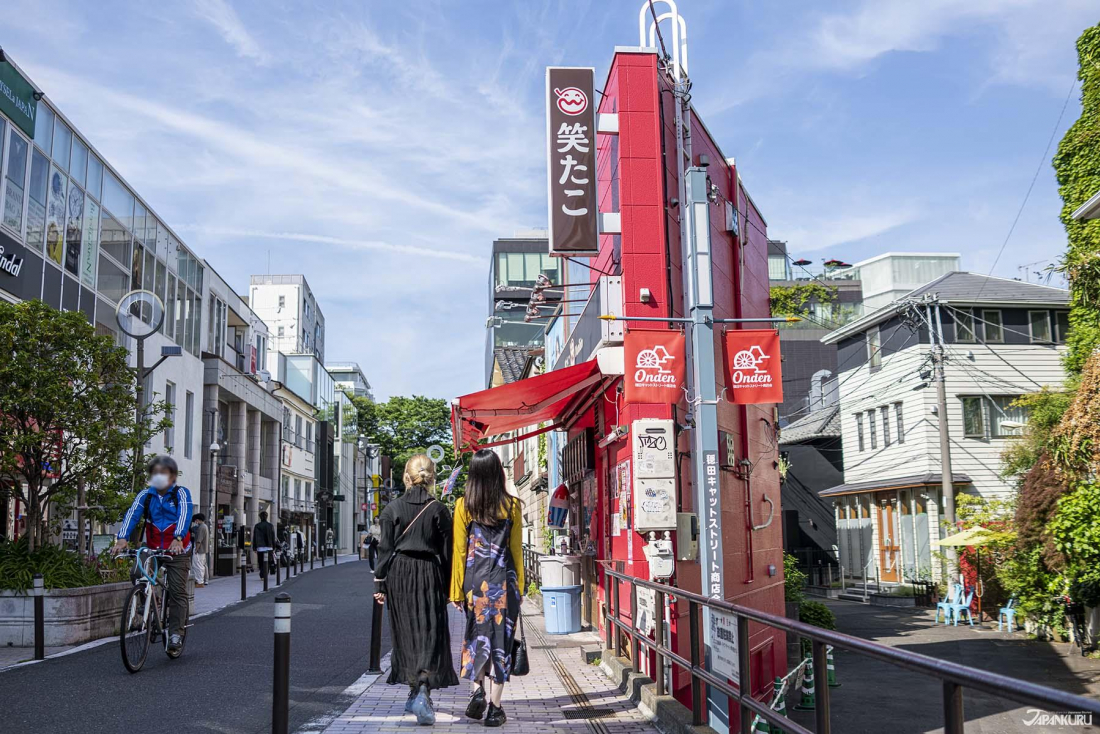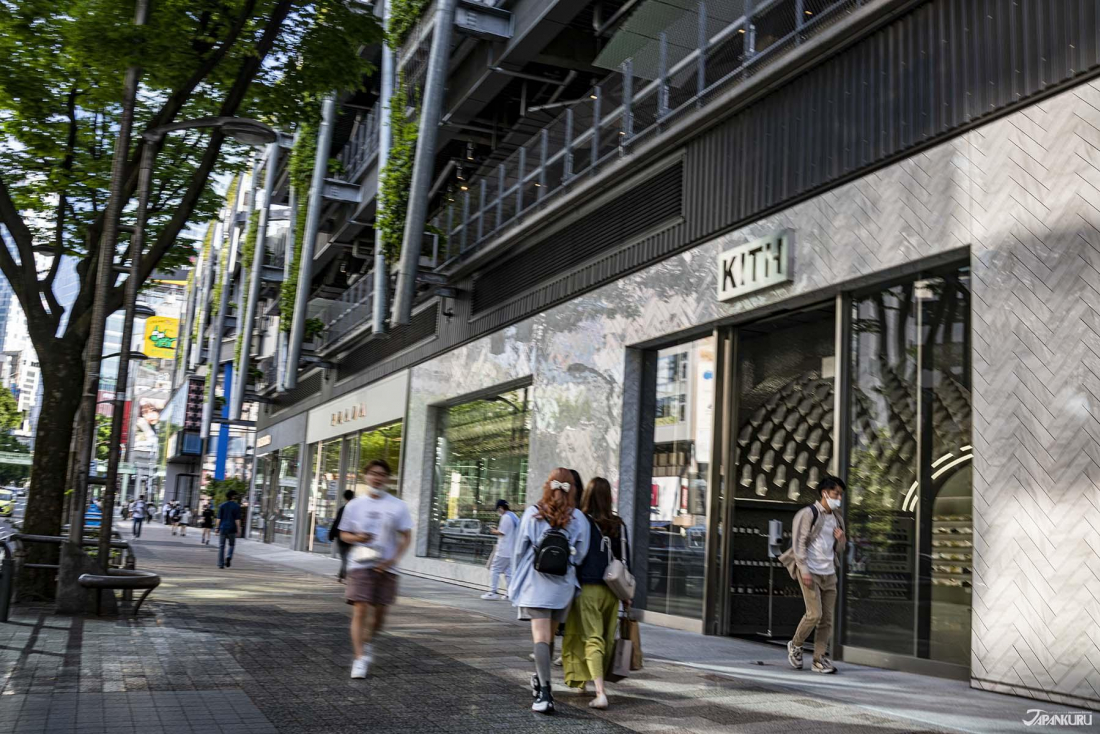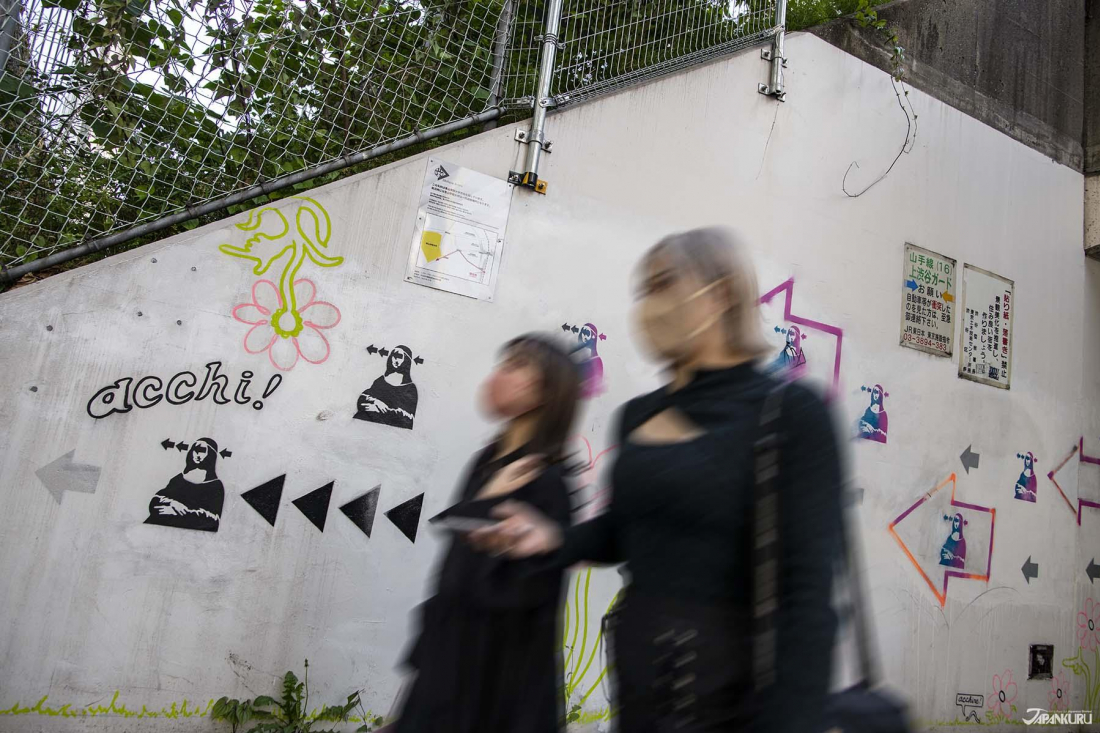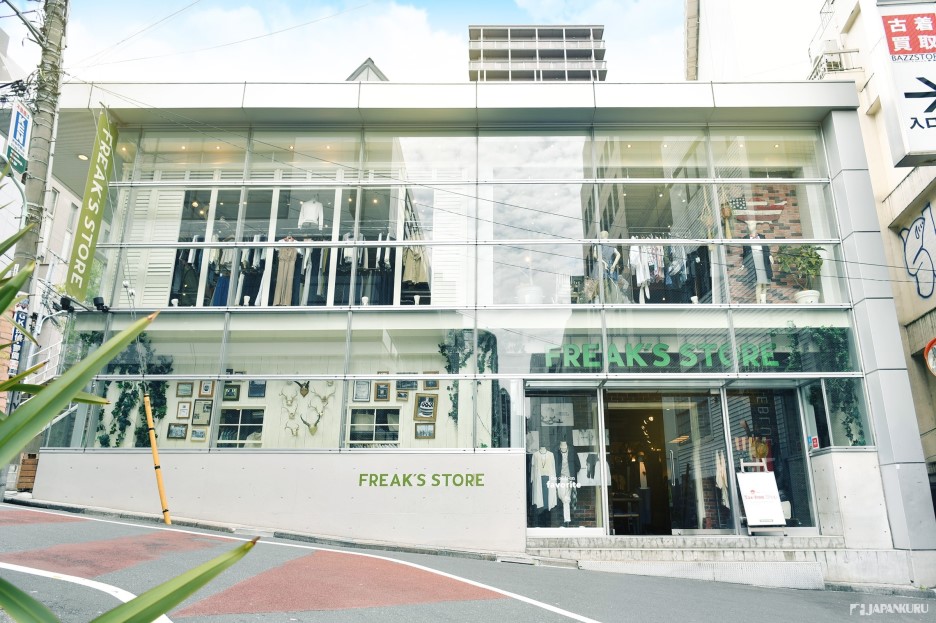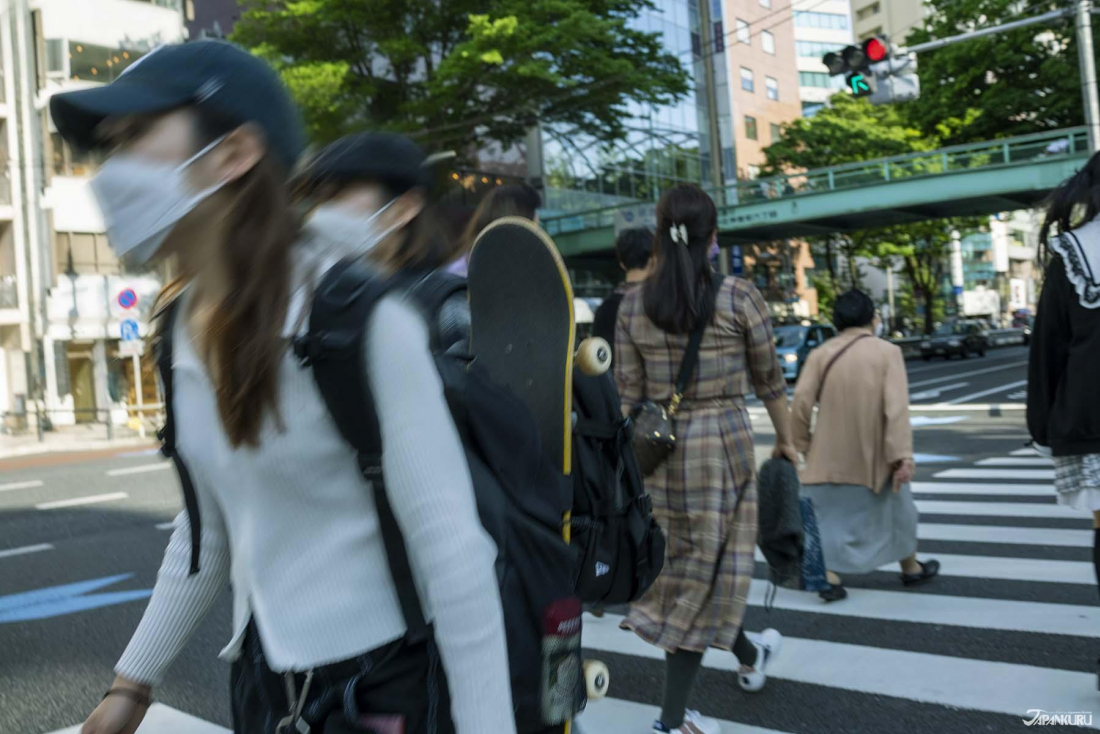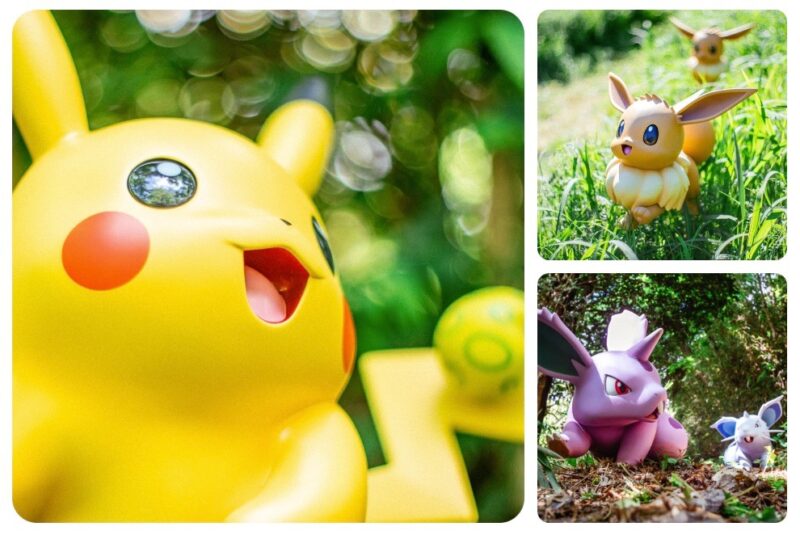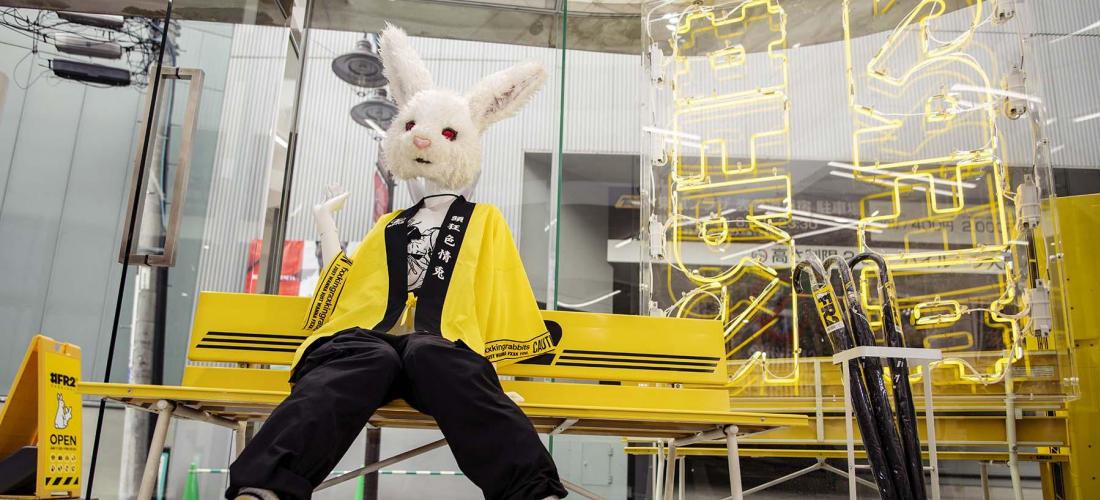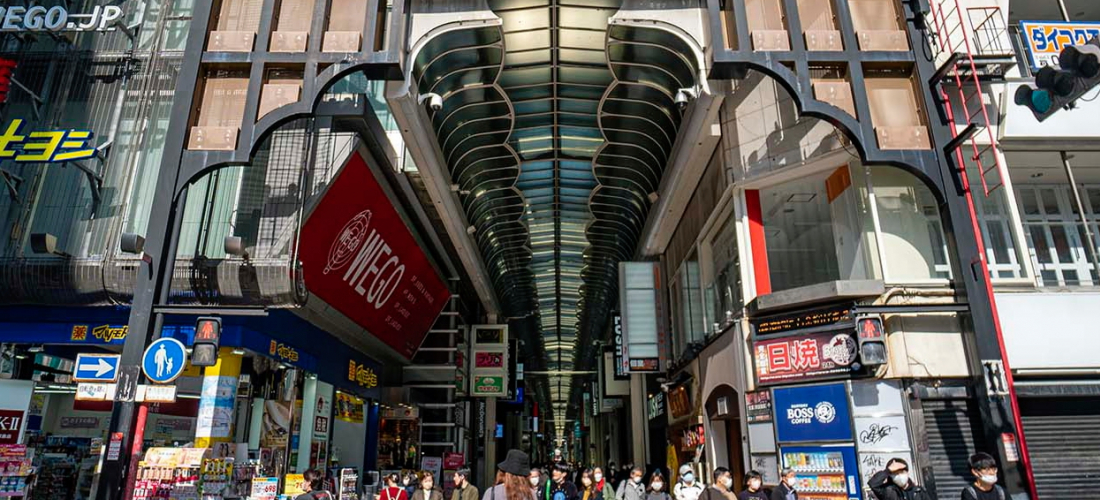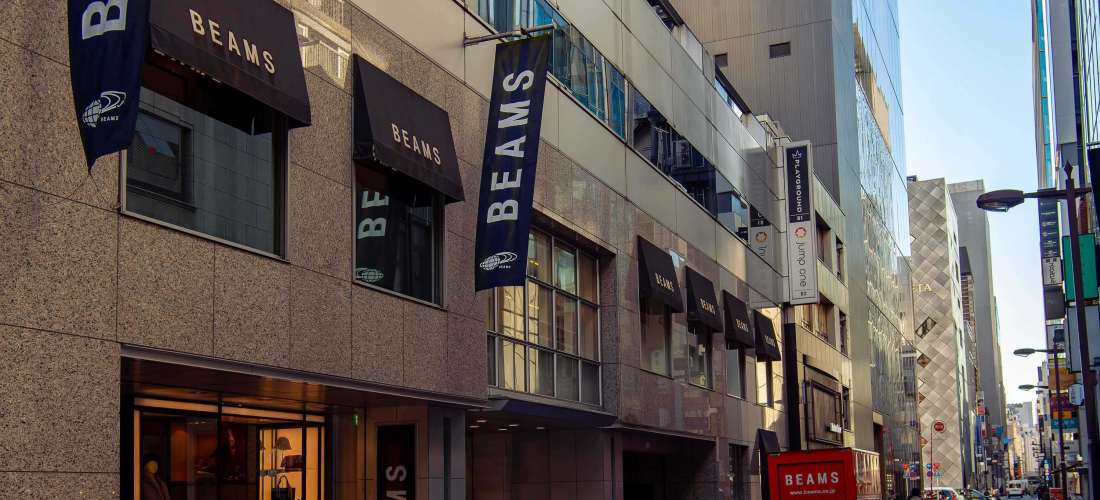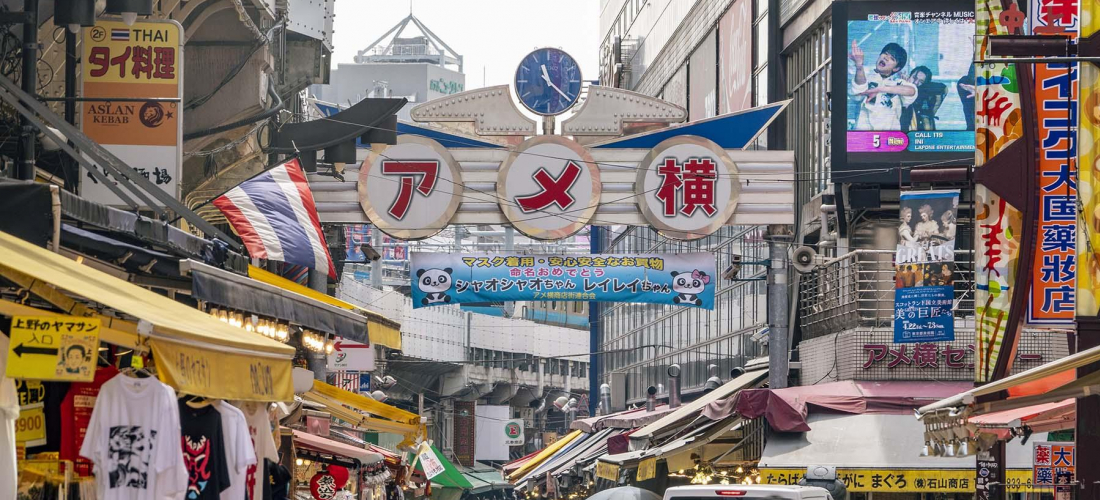CONTENTS
On the busy streets of Tokyo, fashion can set the mood of the city, but sometimes the mood of the city sets the style of that fashion.
Tokyo, a city of the world's most unique fashion trends, constantly intermingling to create brand new looks. In this city of hybrid styles, there's one street undeniably at the heart of Tokyo fashion in the first half of the 21st century, connecting the areas of Harajuku and Omotesando to Shibuya, with a rather unassuming name: Cat Street.
The “Fashion Road” to Shibuya
In Shibuya Ward's Jingumae area, from the 3rd chome district to the 5th, Cat Street stretches for about a kilometer connecting the heart of Shibuya and Harajuku's Omotesando, running roughly parallel southeast of Meiji-dori Avenue. You wouldn't know it just by looking nowadays, but this street was once the Shibuya River, before infrastructure changes in 1964 buried the flowing water underground and built a road on top. Cat Street's official name is actually "Kyushibuyagawa Yuhodoro" (旧渋谷川遊歩道路), which literally means the "Former Shibuya River Promenade Street." When the original narrow alley was widened enough to allow cars to pass through, small boutiques and cafes started popping up, eventually turning Cat Street into a popular destination with all the trends of Tokyo distilled into a 10-minute walk.
Why Is It Called “Cat Street”?
Cat Street has long been a beloved nickname for this fashionable street, but the origins of this moniker are not so clear, and there are a few competing theories. Some say that the street used to be home to a number of stray cats, which would be the most obvious origin story, but others will tell you that the street was named for the Japanese rockabilly band Black Cats, a band rumored to have come together on this trendy street. There's even the theory that Cat Street was so named because it's small and narrow, just like a cat's face!? There's no hard evidence that proves any of these theories to be the sole root of the nickname, and it's always possible that locals just took inspiration from the similarly named streets found in London and Hong Kong. Maybe the name Cat Street was just meant to be.
What to Look For on Cat Street
For Cat Street regulars, the first thing to come to mind when discussing the street is usually the many unique thrift stores and vintage boutiques. When it comes to the title of "Holy Land of Secondhand Shopping," the neighborhood of Shimokitazawa wears the crown, but in this part of Tokyo, Cat Street is something of an unnamed champion. Near the northern intersection with Omotesando, Ragtag is a major player in the area, upholding Cat Street's trendy reputation by offering a wide variety of secondhand items from popular upscale brands.
Cat Street also has some swankier shops and showrooms from international brands, and spots selling quick bites of trendy street food. Even for visitors who don't plan on spending much money while there, just window shopping and enjoying the atmosphere full of Japanese pop culture and Gen Z trends is a great way to enjoy the area. Plus, waiting for you at the southern end of the street is the heart of Shibuya, busy with all kinds of big changes and construction projects.
From Miyashita Park to Fire Street
Slip out the south end of Cat Street, and as soon as you arrive on Meiji-dori Avenue winding its way through Shibuya, your eyes will meet with a barrage of glittering silver and bright yellow from the ostentatious Louis Vuitton storefront that welcomes you to a new and improved Miyashita Park. Not so long ago, this sliver of Shibuya was a run-down little park by the train tracks, but in summer 2020 it was reborn as a shiny new shopping complex, with a rooftop park and a tall hotel towering overhead.
Clearly aiming to become a Shibuya fashion landmark, Miyashita Park's street-level storefronts include the aforementioned LV, alongside other brand names like Gucci and Balenciaga, and a sleek new flagship store from New York street-fashion-influenced brand Kith.
Walk along the concrete wall stenciled with Shibuya-esque street art, and you'll find yourself face-to-face with a somewhat punk Hachiko at the grand entrance to Shibuya's Tower Records. This busy road is nicknamed Fire Street, and unlike Cat Street, there's one clear reason for the moniker: this is also the road where you'll find Shibuya's fire station. But the alleys branching off of this simply-named street are home to boutiques full of new and used fashion, all frequented by the fashionistas of Tokyo so religiously that you might mistake them for shrines to Shibuya style.
The Basecamp for Shibuya Fashion
This whole area around Fire Street is studded with hugely popular Japanese fashion brands, including old standbys like Beams, United Arrows, Freak's Store, and Studious, plus secondhand shops like Ragtag, Rinkan, and Bazzstore. It's not hard to see why the fashion-conscious in Shibuya treat it like home base!
Fashion = Street = Fashion
Just by walking this route from Cat Street to Fire Street and beyond, even the least fashion-focused among us are likely to catch a glimpse of our own unremarkable outfits reflected in the glass of the shop windows and think "maybe I could use a wardrobe update." But of course, there's no better time than now to start on your new fashion journey! If these stylish streets have you feeling motivated to find your own style, then for now you can search the world of Japanese fashion for inspiration, and who knows, before long you might have found yourself a brand new look.
Details
NAME:Cat Street (キャットストリート)
Looking for the latest trends and products coming out of Japan? We've got you covered!
COMMENT
FEATURED MEDIA
VIEW MORE 
A New Tokyo Animal Destination: Relax & Learn About the World’s Animals in Japan
#pr #japankuru #anitouch #anitouchtokyodome #capybara #capybaracafe #animalcafe #tokyotrip #japantrip #카피바라 #애니터치 #아이와가볼만한곳 #도쿄여행 #가족여행 #東京旅遊 #東京親子景點 #日本動物互動體驗 #水豚泡澡 #東京巨蛋城 #เที่ยวญี่ปุ่น2025 #ที่เที่ยวครอบครัว #สวนสัตว์ในร่ม #TokyoDomeCity #anitouchtokyodome

Shohei Ohtani Collab Developed Products & Other Japanese Drugstore Recommendations From Kowa
#pr #japankuru
#kowa #syncronkowa #japanshopping #preworkout #postworkout #tokyoshopping #japantrip #일본쇼핑 #일본이온음료 #오타니 #오타니쇼헤이 #코와 #興和 #日本必買 #日本旅遊 #運動補充能量 #運動飲品 #ช้อปปิ้งญี่ปุ่น #เครื่องดื่มออกกำลังกาย #นักกีฬา #ผลิตภัณฑ์ญี่ปุ่น #อาหารเสริมญี่ปุ่น

도쿄 근교 당일치기 여행 추천! 작은 에도라 불리는 ‘가와고에’
세이부 ‘가와고에 패스(디지털)’ 하나면 편리하게 이동 + 가성비까지 완벽하게! 필름카메라 감성 가득한 레트로 거리 길거리 먹방부터 귀여움 끝판왕 핫플&포토 스폿까지 총집합!
Looking for day trips from Tokyo? Try Kawagoe, AKA Little Edo!
Use the SEIBU KAWAGOE PASS (Digital) for easy, affordable transportation!
Check out the historic streets of Kawagoe for some great street food and plenty of picturesque retro photo ops.
#pr #japankuru #도쿄근교여행 #가와고에 #가와고에패스 #세이부패스 #기모노체험 #가와고에여행 #도쿄여행코스 #도쿄근교당일치기 #세이부가와고에패스
#tokyotrip #kawagoe #tokyodaytrip #seibukawagoepass #kimono #japantrip

Hirakata Park, Osaka: Enjoy the Classic Japanese Theme Park Experience!
#pr #japankuru #hirakatapark #amusementpark #japantrip #osakatrip #familytrip #rollercoaster #retrôvibes #枚方公園 #大阪旅遊 #關西私房景點 #日本親子旅行 #日本遊樂園 #木造雲霄飛車 #히라카타파크 #สวนสนุกฮิราคาตะพาร์ค

🍵Love Matcha? Upgrade Your Matcha Experience With Tsujiri!
・160년 전통 일본 말차 브랜드 츠지리에서 말차 덕후들이 픽한 인기템만 골라봤어요
・抹茶控的天堂!甜點、餅乾、飲品一次滿足,連伴手禮都幫你列好清單了
・ส่องมัทฉะสุดฮิต พร้อมพาเที่ยวร้านดังในอุจิ เกียวโต
#pr #japankuru #matcha #matchalover #uji #kyoto #japantrip #ujimatcha #matchalatte #matchasweets #tsujiri #말차 #말차덕후 #츠지리 #교토여행 #말차라떼 #辻利抹茶 #抹茶控 #日本抹茶 #宇治 #宇治抹茶 #日本伴手禮 #抹茶拿鐵 #抹茶甜點 #มัทฉะ #ของฝากญี่ปุ่น #ชาเขียวญี่ปุ่น #ซึจิริ #เกียวโต

・What Is Nenaito? And How Does This Sleep Care Supplement Work?
・你的睡眠保健品——認識「睡眠茶氨酸錠」
・수면 케어 서플리먼트 ‘네나이토’란?
・ผลิตภัณฑ์เสริมอาหารดูแลการนอน “Nenaito(ネナイト)” คืออะไร?
#pr #japankuru #sleepcare #japanshopping #nenaito #sleepsupplement #asahi #睡眠茶氨酸錠 #睡眠保健 #朝日 #l茶胺酸 #日本藥妝 #日本必買 #일본쇼핑 #수면 #건강하자 #네나이토 #일본영양제 #อาหารเสริมญี่ปุ่น #ช้อปปิ้งญี่ปุ่น #ร้านขายยาญี่ปุ่น #ดูแลตัวเองก่อนนอน #อาซาฮิ

Japanese Drugstore Must-Buys! Essential Items from Hisamitsu® Pharmaceutical
#PR #japankuru #hisamitsu #salonpas #feitas #hisamitsupharmaceutical #japanshopping #tokyoshopping #traveltips #japanhaul #japantrip #japantravel

Whether you grew up with Dragon Ball or you just fell in love with Dragon Ball DAIMA, you'll like the newest JINS collab. Shop this limited-edition Dragon Ball accessory collection to find some of the best Dragon Ball merchandise in Japan!
>> Find out more at Japankuru.com! (link in bio)
#japankuru #dragonball #dragonballdaima #animecollab #japanshopping #jins #japaneseglasses #japantravel #animemerch #pr

This month, Japankuru teamed up with @official_korekoko to invite three influencers (originally from Thailand, China, and Taiwan) on a trip to Yokohama. Check out the article (in Chinese) on Japankuru.com for all of their travel tips and photography hints - and look forward to more cool collaborations coming soon!
【橫濱夜散策 x 教你怎麼拍出網美照 📸✨】
每次來日本玩,是不是都會先找旅日網紅的推薦清單?
這次,我們邀請擁有日本豐富旅遊經驗的🇹🇭泰國、🇨🇳中國、🇹🇼台灣網紅,帶你走進夜晚的橫濱!從玩樂路線到拍照技巧,教你怎麼拍出最美的夜景照。那些熟悉的景點,換個視角說不定會有新發現~快跟他們一起出發吧!
#japankuru #橫濱紅磚倉庫 #汽車道 #中華街 #yokohama #japankuru #橫濱紅磚倉庫 #汽車道 #中華街 #yokohama #yokohamaredbrickwarehouse #yokohamachinatown

If you’re a fan of Vivienne Westwood's Japanese designs, and you’re looking forward to shopping in Harajuku this summer, we’ve got important news for you. Vivienne Westwood RED LABEL Laforet Harajuku is now closed for renovations - but the grand reopening is scheduled for July!
>> Find out more at Japankuru.com! (link in bio)
#japankuru #viviennewestwood #harajuku #omotesando #viviennewestwoodredlabel #viviennewestwoodjapan #비비안웨스트우드 #오모테산도 #하라주쿠 #日本購物 #薇薇安魏斯伍德 #日本時尚 #原宿 #表參道 #japantrip #japanshopping #pr

Ready to see TeamLab in Kyoto!? At TeamLab Biovortex Kyoto, the collective is taking their acclaimed immersive art and bringing it to Japan's ancient capital. We can't wait to see it for ourselves this autumn!
>> Find out more at Japankuru.com! (link in bio)
#japankuru #teamlab #teamlabbiovortex #kyoto #kyototrip #japantravel #artnews
Photos courtesy of teamLab, Exhibition view of teamLab Biovortex Kyoto, 2025, Kyoto ® teamLab, courtesy Pace Gallery

Japanese Makeup Shopping • A Trip to Kamakura & Enoshima With Canmake’s Cool-Toned Summer Makeup
#pr #canmake #enoshima #enoden #에노시마 #캔메이크 #japanesemakeup #japanesecosmetics

⚔️The Robot Restaurant is gone, but the Samurai Restaurant is here to take its place. Check it out, and don't forget your coupon!
🍣신주쿠의 명소 로봇 레스토랑이 사무라이 레스토랑으로 부활! 절찬 쿠폰 발급중
💃18歲以上才能入場的歌舞秀,和你想的不一樣!拿好優惠券去看看~
#tokyo #shinjuku #samurairestaurant #robotrestaurant #tokyotrip #도쿄여행 #신주쿠 #사무라이레스토랑 #이색체험 #할인이벤트 #歌舞伎町 #東京景點 #武士餐廳 #日本表演 #日本文化體驗 #japankuru #japantrip #japantravel #japanlovers #japan_of_insta

Japanese appliance & electronics shopping with our KOJIMA x BicCamera coupon!
用JAPANKURU的KOJIMA x BicCamera優惠券買這些正好❤️
코지마 x 빅 카메라 쿠폰으로 일본 가전 제품 쇼핑하기
#pr #japankuru #japanshopping #kojima #biccamera #japaneseskincare #yaman #dji #osmopocket3 #skincaredevice #日本購物 #美容儀 #相機 #雅萌 #日本家電 #일본여행 #면세 #여행꿀팁 #일본쇼핑리스트 #쿠폰 #일본쇼핑 #일본브랜드 #할인 #코지마 #빅카메라 #japankurucoupon
MAP OF JAPAN
SEARCH BY REGION

LATEST
VIEW MOREEVENT CALENDAR
VIEW MORE


